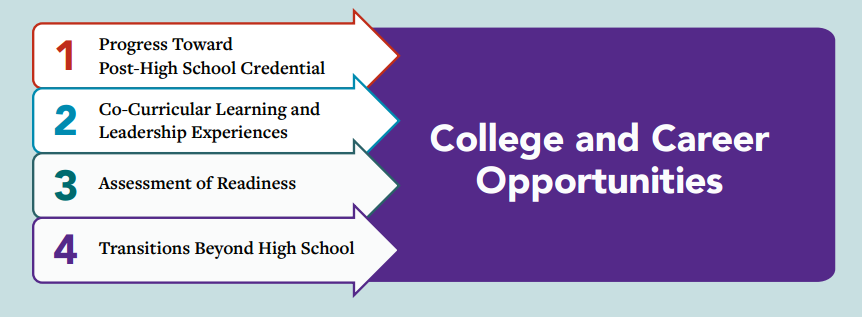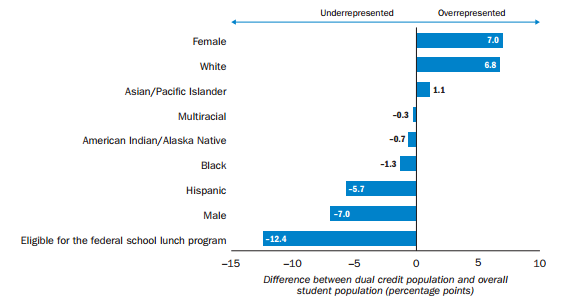Advance CTE’s “Research Round-Up” blog series features summaries of relevant research reports and studies to elevate evidence-backed Career Technical Educational (CTE) policies and practices and topics related to college and career readiness. This month’s blog highlights strategies that support the connection between researchers and local CTE practitioners to generate evidence-based research to inform program improvement. These findings align with Advance CTE’s vision for the future of CTE where each learner engages in a responsive career preparation ecosystem.
![]() State CTE leaders are eager to learn about the newest innovations or best practices to improve CTE learner outcomes. Researchers play an important role in translating the outcomes of different interventions and distilling their findings into recommendations that help to shape the direction of CTE programs. The K-12 education research landscape is rapidly shifting, and to effectively recruit districts and schools, researchers need to have strategies for building strong partnerships. A recent blog from the Career & Technical Education Research Network suggests that understanding these changes and their implications for evaluations is crucial for funders, researchers, and policymakers because of limited information on evidence-based CTE strategies and relatively few causal studies of CTE.
State CTE leaders are eager to learn about the newest innovations or best practices to improve CTE learner outcomes. Researchers play an important role in translating the outcomes of different interventions and distilling their findings into recommendations that help to shape the direction of CTE programs. The K-12 education research landscape is rapidly shifting, and to effectively recruit districts and schools, researchers need to have strategies for building strong partnerships. A recent blog from the Career & Technical Education Research Network suggests that understanding these changes and their implications for evaluations is crucial for funders, researchers, and policymakers because of limited information on evidence-based CTE strategies and relatively few causal studies of CTE.
During the pandemic, it became clear that districts and schools are already facing many challenges regarding the availability of resources and their capacity to participate in research evaluations. Additional barriers include challenges with identifying clear counterfactuals, or programs to serve as reasonable comparisons, navigating district approval processes, and the willingness of schools to participate in district research.
States can support researchers to mitigate these challenges and foster mutually beneficial research partnerships with local practitioners that will contribute to the development of an effective data strategy.
Strategies
The CTE Research Network suggests the following strategies:
- Consider the research-practice partnership (RPP) model.
- Research-practice partnerships (RPPs) are intentional, formalized partnerships between agencies that primarily administer education (such as state education agencies, local education agencies, or schools) and those that primarily research education (such as public and private universities, research institutions, or community groups that conduct research). These partnerships are created to impact decision-making in education through the use of research evidence.
- RPPs offer a great model for long-term working relationships between practitioners and researchers that make it possible to develop and sustain research projects that address educational needs. The National Network of Education Research-Practice Partnerships offers a warehouse of curated resources to support the facilitation of these partnerships.
- Initiate contact and survey the landscape early.
- Conducting early conversations with target participant populations will help determine whether the study’s design and questions are a good fit for a district or school.
- The state branch of the Association for Career and Technical Education (ACTE) as well as existing state-level convenings of district leaders and educators are ideal spaces for initiating conversations between researchers and target audiences.
- These conversations can help the recruitment team answer the following key questions to guide their outreach strategy:
- Why is this project worth a district’s or school’s limited time?
- What remains unclear about the research project’s design?
- What research question is most exciting to practitioners?
- When can partners engage with district and school leaders in the recruitment process, and how can they do so most cost-effectively?
- Expand the target population to include smaller districts.
- One of the major changes that occurred during the pandemic was the rise in virtual communication. If finding comparison populations is challenging, recruiting rural one-school districts could be a solution. Research teams can now leverage virtual methods to collect qualitative data, which mitigates the cost barriers associated with conducting in-person site visits to rural districts.
Application for State CTE Leaders
Strategic partnerships provide CTE leadership with relevant, evidence-based recommendations for implementing high-quality CTE programs for every learner. These partnerships expand the scope and quality of data available to state leaders by working directly with districts to capture the most timely information available to improve the alignment and quality of CTE programs.
There are several examples of established partnerships between state-level agencies and researchers. The Data Quality Campaign produced a Roadmap for Effective Data Use and Research Partnerships that breaks down the steps for integrating research into school improvement policies.
The American Youth Policy Forum and Results for America also offer resources targeted to support state leaders in pushing beyond simply disseminating data to leverage research evidence to drive policy decisions.
Additional resources on data-informed program improvement can be found in Advance CTE’s Learning that Works Resource Center. The Advancing Postsecondary CTE Data Quality Initiative blog series represent lessons learned and successful strategies employed across the five states to move their data systems and structures forward.
Amy Hodge, Policy Associate


 The Every Student Succeeds Act (ESSA) affords states the chance to strengthen their accountability systems by adopting multiple measures of school success rather than relying on an antiquated test-based system. Buoyed by this flexibility, state agencies across the country are exploring strategies to integrate career readiness indicators into their accountability systems. While some states have made considerable progress in this arena, others are left wondering where do we start
The Every Student Succeeds Act (ESSA) affords states the chance to strengthen their accountability systems by adopting multiple measures of school success rather than relying on an antiquated test-based system. Buoyed by this flexibility, state agencies across the country are exploring strategies to integrate career readiness indicators into their accountability systems. While some states have made considerable progress in this arena, others are left wondering where do we start Separately, students who earned dual credit in Oregon schools were more likely than their peers to graduate from high school, enroll in college and persist through their first year. That’s according to new research from the
Separately, students who earned dual credit in Oregon schools were more likely than their peers to graduate from high school, enroll in college and persist through their first year. That’s according to new research from the  College is often considered a safe bet, but
College is often considered a safe bet, but  The report precedes an
The report precedes an